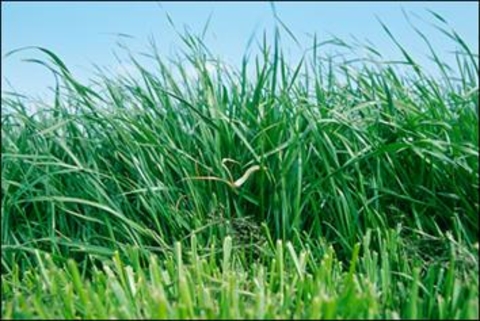Your farming operation may benefit from alternative forage supplies if corn silage harvest is approaching and you’re anticipating reduced forage production due to late planting or prevented planting.
Forage inventory and feeding budget
Livestock farms should have a plan to ensure forage stockpiles provide a continuous supply for a full year. As harvest nears, having an accurate representation of forage inventory is an essential first step in planning out feeding year needs.
The next step is to build a feed and forage needs budget to estimate your farm’s needs. After determining a reasonable estimate, calculate any additional forage needs to quickly identify and secure potential sources of forage or feed alternatives.
For dairy, allocate the highest quality forage for the milking herd and youngest heifers. For beef cows, you may choose to save some for calving time.
Alternative forage options
When corn grain market prices drop, some farms may purchase late-planted corn to add to their supply of corn silage.
Purchasing fields of late-planted corn may be an option for livestock farms, particularly if crop producers are looking to reduce risk when there’s a good chance the corn might not mature before a killing frost. In some cases, farms may have planted beyond the crop insurance planting date requirements, leaving these fields exposed to a huge risk.
Pricing corn silage
How to price the late-planted corn is always a question that needs to be answered before harvest begins. One way is to price the forage based on a post-harvest forage test and the known quantity of harvested forage.
There are many ways to closely estimate the amount of silage. Silos and bags are easier to calculate than a pile, but each can be done. To calculate silage needs, start by estimating wet tons of silage using 65 percent moisture, then adjust from there.
It’s also best to set a minimum price floor if you’re using a post-harvest test to cover the value of fertility and organic matter. In addition to establishing a price floor, consider harvest cost. Typically, harvest costs average $100 per acre, depending on whether the crop is harvested for silage or grain.
As a frame of reference when assessing value, the corn grain value per ton of silage is approximately 7 to 8 bushels of corn per wet ton of silage. Later planting dates will lower the previous estimate.
Fodder value is usually based on some alternative forage, such as straw or stover. Making this comparison is difficult, because the corn plant is much more digestible than dry straw or stover if harvested at 65 percent moisture.
Comparing that portion to high-quality grass forage would be a better estimate of forage value and a better pricing guide.
Sweet corn silage or cannery waste can offer low-cost forage alternatives in certain areas of Minnesota and the Upper Midwest.
Sweet corn silage favorably compares with regular corn silage in feeding value (Table 1). It’ll be lower in starch, as many of these other forages can be.
Alternative forages could include cover crops planted on prevented plant acres that could be available for harvest after Nov. 1. While relying on these can be risky, the forage value as either harvested or grazed forage can be relatively high. Pricing these is difficult.
Cover crop forages will usually be priced based on how they compare to alfalfa haylage and small grain silages. In many cases, they’ll favorably compare with either forage, depending on maturity.
Again, forage tests and estimated yields are critical. For many cover crops and alternative forages, you’ll need to do a wet chemistry forage test to obtain a more accurate forage analysis.
Forage quality
With all these alternative forages, it’s a good investment to get digestibility rates and estimations of neutral detergent fiber (NDF) and the undigested NDF. There’s potential to overestimate forage energy content if the forage’s NDF digests more slowly than we estimate.
Table 1: Summary of forage quality
| Quality | Corn silage | Sweet corn silage | Small grain forage | Brown midrib (BMR) sorghum | Corn stover |
|---|---|---|---|---|---|
| Crude protein (CP) | 8.50% | 9% | 16% | 14% | 5% |
| Neutral detergent fiber (NDF) | 45% | 55% | 50% | 55% | 65% |
| Total digestible nutrients (TDN) | 70% | 67% | 65% | 70% | 45% |
Reviewed in 2018


